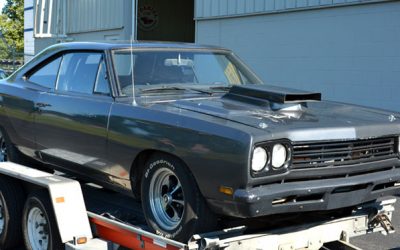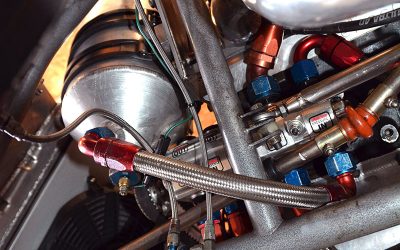Understanding the engine as both an air and vacuum pump.

When the engine is running with the throttles closed, the air coming in is restricted. Because the demand for air created by the falling piston exceeds the amount of incoming air available through the small opening around the throttle blade, a vacuum is created inside the intake manifold. The inlet pressure inside a running, idling engine is well below atmospheric, which is 14.696 pound per square inch at sea level, for standard conditions. Even this number, 14.696 PSI, isn’t always a given and may be a corrected number because altitude, water content, and weather conditions will often raise or lower the number significantly. Next time a hurricane approaches, listen to the weather people as they explain the anticipated storm intensity based on the atmospheric pressure!
Atmospheric pressure can be expressed as Bar (as in “Barometric†— 1 Bar = 14.503 psi), or in Millibar (1/1000th of a Bar, the typical unit used when reporting tropical storm intensity), in inches or millimeters of mercury (29.92 in. Hg, or 760 mm Hg), in feet of water (33.8 feet of water), or inches of water (406.78 inches of water column, abbreviated WC). The scale you choose is determined by how low the pressure or pressure differential you’re looking at is and what kind of resolution you need for your measurements. For small measurements or differentials, a large scale reveals small changes, which is why inches of water are often used when referring to the tests we conduct on carburetion and cylinder head flows.
You may also run into readings listed as PSIG or PSIA, which stand for pounds per square inch gauge and pounds per square inch absolute. Absolute pressure is zero-referenced against a perfect vacuum, so it is equal to gauge pressure plus atmospheric pressure. Gauge pressure is zero-referenced against ambient air pressure, so it is equal to absolute pressure minus atmospheric pressure. You may also run into a compound gauge that shows a scale registering PSI above zero and readings in inches of mercury below zero. There are also absolute pressure gauges that indicate 14.7 PSI at rest. The scale and gauge function is normally written on the gauge face, particularly if the gauge has a scale other than PSI, or if it’s a very sensitive gauge with a limited range.
Pressure is a key design consideration on virtually every part of the modern automobile. We use it to move pistons, actuate or activate transmission, power steering, and brake components and we measure the amount of pressure and flow over the skin of the car, both top and bottom, to help build slippery shapes that reduce drag and achieve better fuel economy. Differential pressures induce flow or movement and movement of air across specifically-shaped surfaces can create differential pressures. In a corollary to the law of conservation of energy, Swiss mathematician and physicist Daniel Bernoulli (1700-1782) proved that if you increase the speed of the fluid that there must be an accompanying decrease in pressure in the fluid, authoring what we now call the Bernoulli Principle. Airplanes, for example, fly because the curved upper airfoil shape forces air to move faster over the upper surface of the wing than across the flat bottom, and if you force air to increase in velocity over the top of the wing you get a corresponding drop in pressure that the wing then moves up into, creating lift. It’s why you see light airplanes tied down at the airport — you don’t have to start the engine to fly. If there is sufficient wind speed at ground level, the airplane will lift off the ground on its own. Whether you move the plane through the air, or the air over the airplane doesn’t matter. It only takes movement over the wing to make the pressure drop on the top side of the wing, thus creating lift.
The Bernoulli Principle is what makes our carburetor work. If you look at a cross section of the main venturi, you’ll see an airplane wing. If you consider it in the whole, you have a “wing in the round,†if you will. We boost this low pressure area by locating a boost venturi, basically another, smaller venturi, so that its lower end rests exactly at the point of lowest pressure in the main venturi. Doing so amplifies the effect and creates a stronger “venturi signal†that is then used to draw fuel from the main well through a jet and into the engine air stream. Taking it one step further, it’s actually differential pressure at work. Atmospheric pressure, acting through the bowl vent, pushes the fuel into the lowered pressure created by the main and boost venturi.
See? What’s not to love about pressure?





0 Comments